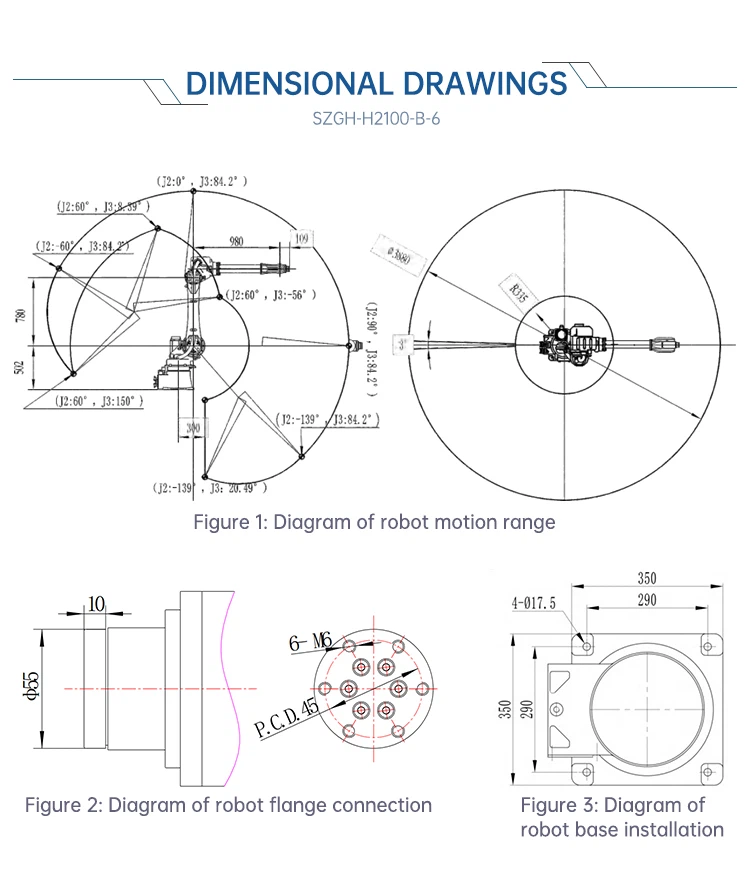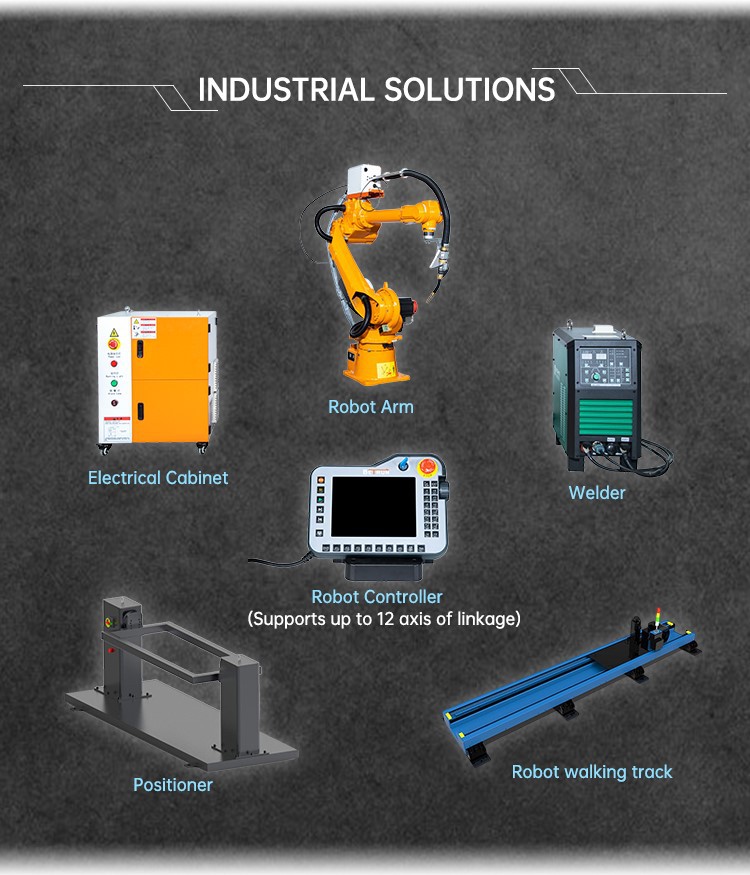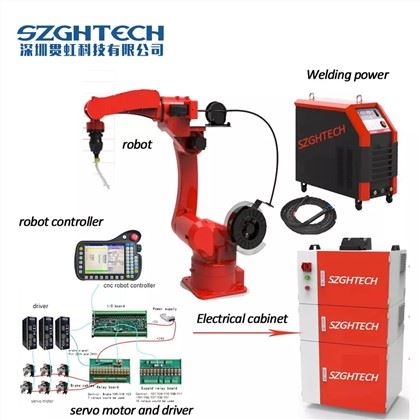SZGH-H1500-B-6
Product lntroduction
About welding robot arm, the most popular model is SZGH-H1500-B-6, it has 1500mm arm spam, 6kg payload which can support Chinese & English & Russian & Vietnamese language!! SZGH-H1500-B-6 robot is dedicated to welding robot ; easy operation, high efficiency and safety;
It will be a good choice if you want to change your production line to robot arm!!
It can save your labor cost, also has nice efficiency, safe operation , and higher precision! Besides, it can work 24 hours for you and no need any extra wages!!
SZGH company has 25 models robot arm in mass production: including generalpurpose, welding, spraying, palletizing, grinding and handling types.
Product model information
| Payload | Reach | Repeatability | Weight | Mounting type | Ambient tempersture |
| 6KG | 1500mm | ±0.05mm | 230 | Ground, bracket, ceiling | 5℃~45℃ |


Product feature and application
Automobile,Metal doors &windows,Engineering Machinery,Mining Machinery,Locomotives,Electrical Appliances, Furniture and Other industries.Basic principles of TIG welding
Tungsten inert gas welding (TIG)
Under the protection of inert gas, the arc heat generated between the tungsten electrode and the workpiece is used to melt the base metal and filler wire.
Sheet metal welding generally does not require filler metal.
Inert gas: argon (Ar) gas, helium (He) gas or mixed gas of argon and helium, and a small amount of hydrogen can be added in some cases.
TIG welding operation mode: manual welding, semi-automatic welding, automatic welding.
(1) Manual welding: the movement of the welding torch and the feeding of the welding wire are operated simultaneously by the welder's left and right hands;
(2) Semi-automatic welding: the welding torch is operated manually, and the welding wire is automatically conveyed at a constant speed by a special wire feeding mechanism;
(3) Automatic welding: There are respectively walking mechanism and wire feeding mechanism to complete these two actions.
Advantages of TIG welding
(1) Good protection effect: Since argon and helium are inert gases with a higher density than air, they do not react with metals and can effectively isolate air, which can greatly protect tungsten electrodes, molten pool metals and heat-affected zones. Good protection against oxidation and nitriding.
(2) Welding under the protection of inert gas, almost all metals can be welded without using flux; it is especially suitable for welding aluminum, magnesium and their alloys with strong chemical activity and the formation of melting point oxides. It can perform pulse welding, reduce welding heat input, and is suitable for welding thin plates or heat-sensitive materials.
(3) The welding process performance is good. Open arc, can observe the arc and molten pool; stable arc combustion, no spatter, no need to remove slag after welding, beautiful weld shape; can perform all-position welding. It is an ideal welding method to realize the forming of the back side of single-side welding.






